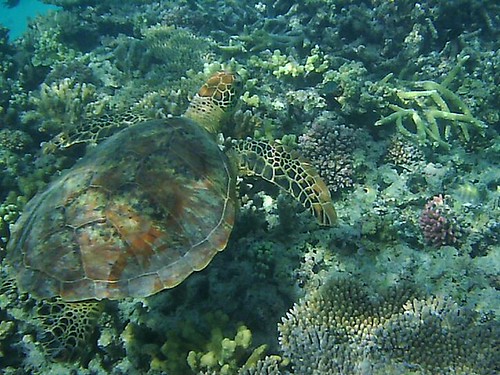On and that the percentage of infected cells varies based on the cell PubMed ID:https://www.ncbi.nlm.nih.gov/pubmed/24779770 line is constant having a earlier report on TBEV infection in tick cell lines . Given that each tick cell lines showed the highest percentage of TBEVpositive cells with MOI , the course of infection at this MOI was determined in higher detail. To measure newlyproduced virus within defined timeperiods, tick cells had been infected with TBEV at MOI . The cells were then washed and fresh medium was added at h p.i. for timepoints , and h, and at h KS176 site Before every single sampling for the subsequent daily timepoints up to day p.i. (Fig. b). Supernatants have been collected at each timepoint plus the virus titre measured by plaque assay on PS cells. The pattern of TBEV infection was similar in both cell lines using the highest amount of virus production between and days p.i. (Fig. b). Interestingly, the maximum titre within the cell line IRE CTVM derived from a known TBEV vector was approximately log higher than in the IDE cell line.  The larger amount of virus production inside the I. ricinus cell line when compared with the cell line derived from I. scapularis, which can be not recognized to become a all-natural vector of TBEV, confirms previous studies The reduce virus titres in IDE cells could be an indicator of lowered vector capacity of I. scapularis for this virus, which may very well be resulting from cells being much less efficiently infectable or having a additional speedy and efficient antiviral response. So as to examine how these two cell lines react to virus infection, two timepoints have been chosen for transcriptomic and proteomic analysisone early in infection at day when virus production was rising, and a single later in infection at day when virus production was decreasing.Weisheit et al. Parasites Vectors :Web page ofFig. Characterisation of TBEV infection in IDE and IRECTVM cells. a Percentage of E proteinpositive tick cells following TBEV infection. IDE and IRECTVM cells had been infected with TBEV at MOI . and . and cells had been fixed and immunostained at day p.i. The percentage of E proteinpositive cells was SGC707 cost calculated. The imply of duplicate cultures is shown. b TBEV production over each day time course in tick cell lines. IDE and IRECTVM cells have been infected with TBEV at MOI and virus was titrated by plaque assay on PS cells. The mean PFUml of duplicate cultures is shown. The limit of detection was PFUml within a dilutionGeneration of samples for transcriptomic and proteomic analysisSix replicate tubes per timepoint per cell line were either infected with TBEV at MOI or mockinfected. At days and p.i each RNA and protein were isolated from each and every tube by dividing the cell suspension in half, as a result making sure that both transcriptomic and proteomic analyses have been carried out on samples derived from each tube. Due to the biosafety restrictions on handling TBEV, it was only possible
The larger amount of virus production inside the I. ricinus cell line when compared with the cell line derived from I. scapularis, which can be not recognized to become a all-natural vector of TBEV, confirms previous studies The reduce virus titres in IDE cells could be an indicator of lowered vector capacity of I. scapularis for this virus, which may very well be resulting from cells being much less efficiently infectable or having a additional speedy and efficient antiviral response. So as to examine how these two cell lines react to virus infection, two timepoints have been chosen for transcriptomic and proteomic analysisone early in infection at day when virus production was rising, and a single later in infection at day when virus production was decreasing.Weisheit et al. Parasites Vectors :Web page ofFig. Characterisation of TBEV infection in IDE and IRECTVM cells. a Percentage of E proteinpositive tick cells following TBEV infection. IDE and IRECTVM cells had been infected with TBEV at MOI . and . and cells had been fixed and immunostained at day p.i. The percentage of E proteinpositive cells was SGC707 cost calculated. The imply of duplicate cultures is shown. b TBEV production over each day time course in tick cell lines. IDE and IRECTVM cells have been infected with TBEV at MOI and virus was titrated by plaque assay on PS cells. The mean PFUml of duplicate cultures is shown. The limit of detection was PFUml within a dilutionGeneration of samples for transcriptomic and proteomic analysisSix replicate tubes per timepoint per cell line were either infected with TBEV at MOI or mockinfected. At days and p.i each RNA and protein were isolated from each and every tube by dividing the cell suspension in half, as a result making sure that both transcriptomic and proteomic analyses have been carried out on samples derived from each tube. Due to the biosafety restrictions on handling TBEV, it was only possible
to generate a single set of samples, which yielded sufficient material to get a single sequencing run and proteomic evaluation for each treatment. Consequently the results might be viewed as in this context as a baseline for future studies. Before RNA sequencing, RNA samples were tested for the presence of TBEV by qRTPCR (Further file). Only mockinfected samples damaging for TBEV with NS RNA levels beneath the detection limit of your assay, and infected samples constructive for TBEV with NS levels above , copies, have been incorporated inside the subsequent evaluation. Additionally, only higher high quality samples displaying no indicators of RNA degradation were made use of. The soluble proteins extracted from mockinfected.On and that the percentage of infected cells varies based on the cell PubMed ID:https://www.ncbi.nlm.nih.gov/pubmed/24779770 line is consistent having a prior report on TBEV infection in tick cell lines . Due to the fact both tick cell lines showed the highest percentage of TBEVpositive cells with MOI , the course of infection at this MOI was determined in greater detail. To measure newlyproduced virus within defined timeperiods, tick cells had been infected with TBEV at MOI . The cells have been then washed and fresh medium was added at h p.i. for timepoints , and h, and at h prior to every single sampling for the subsequent every day timepoints as much as day p.i. (Fig. b). Supernatants were collected at every timepoint along with the virus titre measured by plaque assay on PS cells. The pattern of TBEV infection was related in each cell lines using the highest level of virus production in between and days p.i. (Fig. b). Interestingly, the maximum titre in the cell line IRE CTVM derived from a known TBEV vector was approximately log larger than in the IDE cell line. The greater level of virus production inside the I. ricinus cell line compared to the cell line derived from I. scapularis, which is not known to be a all-natural vector of TBEV, confirms previous research The reduce virus titres in IDE cells may be an indicator of reduced vector capacity of I. scapularis for this virus, which could possibly be as a result of cells being much less effectively infectable or getting a much more rapid and effective antiviral response. To be able to examine how these two cell lines react to virus infection, two timepoints have been selected for transcriptomic and proteomic analysisone early in infection at day when virus production was increasing, and one particular later in infection at day when virus production was decreasing.Weisheit et al. Parasites Vectors :Page ofFig. Characterisation of TBEV infection in IDE and IRECTVM cells. a Percentage of E proteinpositive tick cells following TBEV infection. IDE and IRECTVM cells have been infected with TBEV at MOI . and . and cells were fixed and immunostained at day p.i. The percentage of E proteinpositive cells was calculated. The imply of duplicate cultures is shown. b TBEV production over each day time course in tick cell lines. IDE and IRECTVM cells were infected with TBEV at MOI and virus was titrated by plaque assay on PS cells. The mean PFUml of duplicate cultures is shown. The limit of detection was PFUml inside a dilutionGeneration of samples for transcriptomic and proteomic analysisSix replicate tubes per timepoint per cell line have been either infected with TBEV at MOI or mockinfected. At days and p.i both RNA and protein have been isolated from every single tube by dividing the cell suspension in half, as a result ensuring that both transcriptomic and proteomic analyses had been carried out on samples derived from every single tube. Due to the biosafety restrictions on handling TBEV, it was only probable
to generate a single set of samples, which yielded sufficient material to get a single sequencing run and proteomic evaluation for every remedy. Therefore the outcomes might be deemed within this context as a baseline for future research. Before RNA sequencing, RNA samples had been tested for the presence of TBEV by qRTPCR (Extra file). Only mockinfected samples negative for TBEV with NS RNA levels below the detection limit of your  assay, and infected samples positive for TBEV with NS levels above , copies, were integrated within the subsequent evaluation. Moreover, only higher high quality samples showing no indicators of RNA degradation had been employed. The soluble proteins extracted from mockinfected.
assay, and infected samples positive for TBEV with NS levels above , copies, were integrated within the subsequent evaluation. Moreover, only higher high quality samples showing no indicators of RNA degradation had been employed. The soluble proteins extracted from mockinfected.